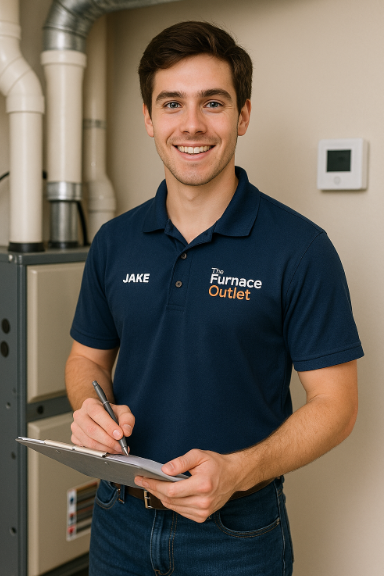Let’s Clear the Air on AC Tonnage
I’ve had homeowners look me dead in the eye and say, “Jake, I need the biggest AC unit you’ve got.” That’s usually followed by a request for a 9 ton air conditioner or even a 14 ton AC unit.
Let’s slow down.
For starters, 1 ton of cooling equals 12,000 BTUs per hour. So a 9-ton system kicks out a whopping 108,000 BTUs/hour. Unless you’re cooling a church, warehouse, or mini-mall, that’s probably overkill for a house—especially a typical two-story residence in the U.S.
Oversized Isn’t Optimized
Oversizing your AC is like buying a school bus when all you need is a pickup. Sure, it’ll haul your groceries, but it’s wildly inefficient. An AC that’s too big will cool your home too fast, leading to short cycling. That means it won't run long enough to dehumidify the air properly. Result? Clammy rooms, uneven temps, and more wear and tear on the compressor.
A great explainer from Energy Vanguard dives deep into why rules of thumb like “one ton per 500 square feet” are outdated. Manual J load calculations are the gold standard. Anything else is guesswork.
Why You Hear “Air Climatisé Centrale” So Often
If you’re browsing or working with folks in Canada—or even some multilingual U.S. markets—you’ll see “air climatisé centrale” tossed around. It simply means “central air conditioning” in French. While the terminology might be different, the principles of HVAC sizing are universal. Canadian codes, in fact, tend to be even stricter when it comes to efficiency.
Homeowners there rely on systems that are cold-climate certified, often backed by research from agencies like Natural Resources Canada. That same energy-smart mindset is spreading in the U.S., especially as more folks consider heat pumps and eco-conscious refrigerants like R-32.
Sizing a System for a Two-Story House
Two-story homes bring unique challenges. Upstairs gets hot fast because heat rises, and sunlight pours through those higher windows. The best air conditioner for a 2 story house needs to account for:
-
Zoning: Are you using one thermostat or two?
-
Ductwork layout: Is airflow balanced between floors?
-
Insulation & windows: Poor insulation = higher BTU demand
-
Return air placement: You need return vents on both floors for optimal circulation
While a massive 9 ton AC unit might feel like the safe bet, more often than not, a 3- to 5-ton system with proper zoning and airflow will handle the job beautifully.
That’s why systems like the Goodman 3 Ton 14.5 SEER2 R-32 Bundle are such workhorses for medium-sized homes. They offer balance: solid cooling, reasonable energy use, and compatibility with smaller ductwork.
Comparing SEER2 Ratings
Here’s a dirty little secret most contractors won’t tell you: A higher SEER2 rating doesn’t automatically mean lower bills. If your system is oversized or your ducts are leaky, you’re wasting that extra efficiency. But assuming your install is tight and right, here’s what you’re looking at:
-
14 SEER2 is the current minimum in most of the U.S.
-
16 SEER2 and above gets you into high-efficiency territory
-
SEER2 matters more than SEER—it reflects real-world performance under stricter conditions.
The Goodman bundle above offers 14.5 SEER2, right on the sweet spot for value and performance—without needing premium pricing.
For a deeper breakdown, check out ACHR News’ SEER2 explainer, which lays out what changed in 2023 and why it matters for your cooling bills.
When to Consider Multi-Stage Cooling
If you’ve got a larger two-story home (say, 2,500+ square feet), and you're seeing hot/cold spots upstairs or in the attic bedroom, a variable-speed system or multi-stage compressor might be the better fit.
Systems with these features:
-
Run longer at lower speeds, improving humidity control
-
Reduce temperature swings
-
Boost efficiency during milder weather
These technologies are standard in premium systems, but even mid-tier models like Goodman’s have upgraded options now. Pairing a quality air handler with the right thermostat is just as important as the condenser outside.
Want to geek out more? HVAC.com breaks down two-stage vs. variable-speed like a champ.
How Much Is Too Much?
If someone tells you a 14 ton AC unit is right for your home and you’re not living in a mansion, that’s a red flag. A system that size would serve a commercial property or multi-unit building—not a standard residence.
Oversizing means:
-
Bigger upfront cost
-
Higher energy bills
-
More wear on components
-
Shorter lifespan
Smart money goes to right-sized systems with intelligent airflow, zoning, and humidity control. And let’s be real: smaller systems are easier to service, easier to upgrade, and easier on your wallet long-term.
Need help figuring out your home's ideal tonnage? The Department of Energy’s sizing guide is a solid resource to estimate tonnage before calling in the pros.
The Bottom Line from Jake
Here’s my straight-up advice: Don’t get hypnotized by tonnage. Bigger isn’t better if it’s not right-sized. Instead of chasing a 9 ton air conditioner or a 14 ton AC unit, focus on:
-
Load calculations (Manual J)
-
Ductwork condition and design
-
SEER2 efficiency for your climate
-
Proper zoning and airflow management
If you want to avoid callbacks, complaints, and comfort issues, install the right system—not the biggest.
Whether you’re cooling a two-story colonial or a modern build, systems like the Goodman 3 Ton 14.5 SEER2 R-32 Bundle can punch above their weight when installed correctly.
This is the kind of gear I’d put in my own house. No fluff, no oversell—just dependable performance backed by a trusted name.
Need a Hand?
Got questions about system sizing, SEER2 ratings, or which bundle’s right for your home? Drop a comment or reach out through the chat—we’ve got your back, no sales pressure needed.







